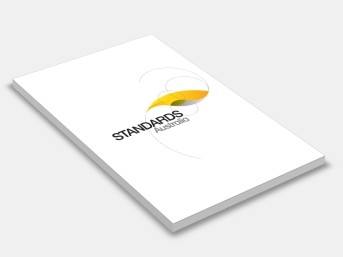AS 1684.3:2021 Residential timber-framed construction, Part 3: Cyclonic areas
Standards Australia
Supersedes: AS 1684.3-2010 Residential timber-framed construction, Part 3: Cyclonic areas
Supersedes: AS 1684.3-2010 AMDT 1 Residential timber-framed constructions, Part 3: Cyclonic areas
Draft Designation: DR AS 1684.3:2020The objective of this Standard is to provide the building industry with procedures that can be used to determine building practice, to design or check construction details, and to determine member sizes, and bracing and fixing requirements for time-framed construction in cyclonic area.
The objectives of this revision are to -
(a): make editorial revisions and some technical changes to correct mistakes and clarify the application of this document;
(b): amend Section 5: Flooring and Decking to remove ambiguities and to reflect current research and experience which is able to provide for a quieter and more robust floor;
(c): amend Table 9.25 of AS 1684.2 to include suitable nail and screw fixings for 45 mm thick roof battens;
(d) reversing the values in Tables 8.18(a) to 8.18(n) to represent JD5 capacities, while continuing to recognise JD4 capacities (and increase the values by 12.5%) where this is known;
(e) amend AS 1684.2 and AS 1684.3 to provide a suitable deemed-to-satisfy details for metal tie down to timber connection that is compatible with AS 4773; and
(f) relaxing the notching requirements for non-load bearing walls
Statements expressed in mandatory terms in Notes to the Span Tables are deemed to be requirements of this Standard.
The terms "normative" and "informative" are used in Standards to define the application of the appendices to which they apply. A "normative" appendix is an integral part of a Standard, whereas an "informative" appendix is only for information and guidance.
Originated as AS 056-1946. Revised and redesignated as AS 1684.3-1999. Previous edition 2010. Fourth edition 2021.
This Standard specifies requirements for building practice and the selection, placement and fixing of the various structural elements used in the construction of timber-framed Class 1 and Class 10 buildings as defined by the National Construction Code and within limitations given in Clause 1.4. The provisions of this standard also apply to alterations and additions to such buildings.
Contents:
Section 1: Scope And General
Section 2: Framing Members
Section 3: Substructure
Section 4: Floor Framing
Section 5: Flooring And Decking
Section 6: Wall Framing
Section 7: Roof Framing
Section 8: Racking And Shear Forces (Bracing)
Section 9: Fixings And Tie-Down Design
Appendix A: Determination Of Roof Mass
Appendix B: Durability
Appendix C: Interpolation
Appendix D: Examples - Foundation Bearing Area, Distribution Of Bracing And Shear Force
Appendix E: Moisture Content And Shrinkage
Appendix F: Racking Forces - Alternative Procedure
Appendix G: Timber Species And Properties
Appendix H: Storage And Handling
Appendix I: Collar Ties With Multiple Rows Of Underpurlins
Appendix J: Building Practices For Engineered Wood Products (EWPs)
Timber Structures and Framing.
TM-010
Australian Building Codes Board; Australian Forest Products Association; Australian Institute of Building Surveyors; Australian Timber Flooring Association; Engineers Australia; Forest and Wood Products Australia; Forest Industries Federation, WA; Frame&Truss Manufacturers Association Australia; Glued Laminated Timber Association of Australia; Griffith University; Housing Industry Association; Housing SA; Institution of Fire Engineers; James Cook University; Master Builders Australia; Timber Development Association, NSW; Timber Queensland; University of Technology Sydney.
